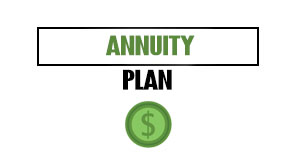Agency owners seeking to invest in and scale their businesses to seven figures are being presented with the same recycled advice across YouTube channels and social media. After reviewing numerous videos from marketing agency gurus, a clear pattern emerges: they all repeat the same six points without delving into the nuances that drive success. The standard advice includes selecting a high-value skill, crafting an irresistible offer, establishing a personal brand, prioritizing client retention, creating systems for outsourcing, and being patient with results. While not inherently wrong, this surface-level guidance overlooks the deeper realities of building a truly successful agency.
Table of Contents
ToggleSelling Results, Not Skills
The first misconception is that mastering a high-value skill like Facebook ads or copywriting automatically leads to financial success. The reality is starkly different. Successful agencies understand they’re not selling services or skills – they’re selling outcomes.
Clients only pay thousands of dollars monthly for one of two reasons: to make more money or save time. There are zero exceptions to this rule. Even services like website design that seem disconnected from direct revenue generation are ultimately purchased because clients believe they will lead to increased conversions and sales.
The key difference is in positioning. Instead of trying to fit a skill into a formula, successful agency owners start by identifying specific business problems and work backward to develop solutions that directly impact revenue or efficiency.
Creating Truly Irresistible Offers
The generic advice of promising significant results with a guarantee attached no longer works in today’s market. After working with over 4,000 agencies, it’s clear that clients have become skeptical of increasingly outlandish promises.
A genuinely compelling offer requires four critical components:
- Addressing a pressing, real-world business problem
- Implementing a unique system that makes you irreplaceable
- Setting pricing that ensures profitability while delivering client value
- Including meaningful risk reversal that demonstrates confidence
Missing any single element will result in an offer that fails to convert prospects into clients. The most successful agencies also incorporate a fifth element that separates seven-figure operations from the rest.
The Capital Allocation Disaster
The most expensive mistake agency owners make isn’t hiring the wrong people or choosing bad software – it’s fundamentally misunderstanding how to allocate capital for maximum return. The typical agency owner approaches investment decisions with the financial sophistication of someone buying lottery tickets, throwing money at symptoms rather than systematically addressing root causes that drive revenue growth.
Consider the stark reality: most agencies operate with profit margins between 10-20%, yet owners routinely make investment decisions that could easily swing profitability by 30-50%. A $50,000 investment in the wrong direction doesn’t just cost $50,000 – it potentially costs $200,000-500,000 in lost opportunity over 12-24 months when factoring in compound growth effects and competitive positioning.
The conventional wisdom suggests reinvesting profits back into the business, but this advice ignores the critical question of where those investments generate the highest returns. Agency owners who reach seven figures understand that not all business investments are created equal, and the difference between strategic capital allocation and scattered spending often determines whether an agency scales or stagnates.
The Three Investment Tiers That Determine Success
Tier 1: Revenue Multiplication Investments (300-500% ROI)
The highest-return investments directly multiply revenue generation capacity rather than simply improving operations. These investments typically fall into three categories: advanced attribution systems, proprietary technology development, and strategic talent acquisition for revenue-generating roles.
Advanced attribution systems represent perhaps the most undervalued investment opportunity in the agency space. While most agencies track basic metrics, investing $15,000-25,000 in sophisticated tracking infrastructure that can demonstrate precise ROI attribution gives them massive competitive advantages. Agencies with superior attribution capabilities command premium pricing because they can prove their value with mathematical precision, often increasing client lifetime value by 40-80%.
Proprietary technology development, whether through custom software tools or advanced automation systems, creates defensible competitive moats that justify premium pricing. An agency that invests $100,000 developing proprietary optimization algorithms or reporting platforms can often charge 50-100% more than competitors while delivering superior results. The key is to ensure that these investments create capabilities that competitors cannot easily replicate.
Strategic talent acquisition for roles that directly generate revenue – such as business development professionals with proven track records or specialists who can expand service offerings into higher-margin areas – typically delivers returns exceeding 300% within 12-18 months when executed correctly.
Tier 2: Efficiency Multiplication Investments (150-250% ROI)
These investments focus on dramatically improving operational efficiency and capacity without proportional increases in overhead. The most impactful include advanced project management systems, strategic outsourcing partnerships, and automation infrastructure that eliminates repetitive tasks.
However, the critical mistake most agency owners make is implementing efficiency improvements without first ensuring their revenue generation systems can handle increased capacity. Investing $30,000 in operational efficiency improvements while maintaining inadequate business development processes creates internal bottlenecks that prevent capturing the full return on investment in efficiency.
The highest-performing agencies coordinate their efficiency investments with revenue expansion strategies, ensuring that operational improvements directly translate to increased client capacity and revenue growth rather than simply reducing workload.
Tier 3: Risk Mitigation Investments (50-120% ROI)
These investments provide important but lower-return benefits, focusing on reducing business risks and improving sustainability. Examples include diversifying service offerings, building redundancy into critical systems, and developing comprehensive standard operating procedures.
While these investments are necessary for long-term stability, many agency owners make the mistake of prioritizing risk mitigation over revenue growth during critical phases of expansion. The optimal approach involves making minimal necessary risk mitigation investments while focusing primary capital allocation on higher-return opportunities during periods of rapid scaling.
The Compound Growth Calculation Most Agencies Miss
The mathematical reality of agency growth reveals why strategic investment timing creates exponential rather than linear returns. An agency generating $500,000 annually that invests $100,000 in revenue multiplication capabilities could realistically expect to reach $1.2-1.5 million within 24 months, assuming proper execution. However, the same investment made at $1.5 million annual revenue could drive growth to $3-4 million within the same timeframe.
This compound effect explains why successful agencies often appear to experience sudden, explosive growth rather than steady progression. The reality is that their investment decisions create feedback loops where each dollar invested generates returns that fund progressively larger investments, resulting in accelerating growth trajectories.
The critical insight is that investment timing matters as much as investment selection. Agencies that delay high-return investments while their revenue base is smaller miss opportunities for compound growth that become increasingly difficult to replicate at larger scales.
The Hidden Costs of Cheap Solutions
Perhaps the most expensive mistake agency owners make is choosing lower-cost solutions that appear financially prudent but create hidden opportunity costs that dwarf the initial savings. This manifests in several common scenarios that systematically undermine long-term profitability.
Cheap software solutions that require extensive manual workarounds often cost agencies $20,000-50,000 annually in lost productivity, even when the software itself costs only $2,000-5,000 per year. The hidden cost comes from team members spending hours on tasks that better systems could automate, preventing them from focusing on revenue-generating activities.
Similarly, hiring less expensive talent without considering their impact on client results often creates massive hidden costs. A $40,000 employee who delivers mediocre results may cost significantly more than a $80,000 employee who drives superior outcomes, when factoring in client retention rates, referral generation, and the agency’s ability to command premium pricing.
The most successful agencies approach cost decisions by calculating total impact on revenue generation rather than simply comparing upfront expenses. This perspective shift often reveals that seemingly expensive solutions deliver superior ROI when their full impact is quantified correctly.
Investment Portfolio Diversification for Agencies
Sophisticated agency owners treat their business investments like a diversified portfolio, allocating capital across different risk levels and time horizons to optimize overall returns while managing downside risk. This approach involves dividing available investment capital into three buckets with different expected outcomes and timelines.
High-risk, high-return investments (30-40% of available capital) focus on experimental approaches that could create breakthrough competitive advantages. These might include developing innovative service offerings, entering new market segments, or building proprietary technology platforms. While many of these investments may fail, successful ones can generate returns exceeding 500-1000%.
Medium-risk, predictable-return investments (40-50% of capital) target proven strategies for scaling existing operations. These include expanding successful service lines, hiring proven talent for established roles, and upgrading systems with demonstrated ROI potential. These investments typically generate returns of 150-300% with a high probability of success.
Low-risk, foundational investments (10-20% of capital) ensure business stability and compliance requirements. While these investments may not generate direct returns, they prevent costly disruptions that could undermine higher-return investments.
The Seven-Figure Investment Threshold
Agencies approaching seven-figure revenue face a critical investment decision point that often determines whether they successfully scale beyond this milestone or plateau indefinitely. The conventional approach of gradually increasing investments proportional to revenue growth typically proves insufficient for breaking through this barrier.
Instead, reaching seven figures often requires making disproportionately large investments in capabilities that won’t generate returns for 6-12 months but create the foundation for rapid growth beyond the seven-figure threshold. These investments might include developing enterprise-level service capabilities, building advanced technology infrastructure, or acquiring strategic talent with experience managing larger operations.
The mathematical reality is that scaling from $800,000 to $1.5 million annual revenue requires fundamentally different capabilities than growing from $300,000 to $800,000. Agencies that make necessary investments during their approach to seven figures often experience rapid acceleration beyond this milestone, while those that maintain conservative investment approaches frequently stagnate just below this critical threshold.
Understanding these investment dynamics and their compound effects on agency growth represents perhaps the most important strategic knowledge for agency owners serious about reaching and exceeding seven-figure revenue levels.
Authority Trumps Personal Branding
The advice to “build a personal brand” has been misinterpreted by many agency owners who focus on creating an influencer-style presence with selfies and motivational content. This approach misses the mark entirely.
What matters isn’t followers or looking cool online – it’s establishing genuine authority in your field. This comes from creating content that demonstrates expertise through detailed breakdowns, tutorials, and case studies that showcase real results.
A single in-depth YouTube video displaying deep expertise carries more weight than thousands of Instagram photos. The focus should be on becoming the go-to resource that companies need, not just another person to follow.
The Truth About Client Retention
Client retention goes far beyond fancy reports and smooth communication. While these elements are necessary, they only scratch the surface of what truly keeps clients long-term.
Effective retention requires:
- A predictable, repeatable system for generating consistent results
- Positioning yourself as a growth partner rather than just a service provider
- Overdelivering in ways that meaningfully impact the client’s business
The ultimate goal is to become irreplaceable by consistently demonstrating value that extends beyond the initial scope of work. This approach to client relationships can make or break an agency’s long-term success.
The Outsourcing Myth
Perhaps the most damaging advice is the notion that agency owners should quickly outsource everything and become hands-off CEOs. This Instagram entrepreneur fantasy rarely aligns with reality.
Scaling isn’t about disappearing – it’s about being strategically involved. While systems and delegation are essential, you cannot outsource strategic thinking and expect to outperform thousands of competitors.
The most successful agencies maintain a relentless focus on work quality without micromanaging. They continuously evolve their systems, recognizing that stagnation creates vulnerability to competition.
Success Is Mathematical, Not Magical
The final piece of common advice about patience holds only if your inputs are correct. Business success isn’t a magical moment but a mathematical game of testing and iteration.
The key factors that determine an agency’s growth trajectory include:
- How quickly can you test different configurations of your business model
- Your ability to compress time through rapid learning and implementation
- Surrounding yourself with people who have already solved your current challenges
This last point highlights why mentorship isn’t optional but essential for reducing uncertainty and accelerating growth. Learning from someone who has already made the mistakes you’re about to make can save months or years of painful trial and error.
For agency owners serious about reaching seven figures, the path forward requires looking beyond the standard advice. Success comes not from following generic formulas but from understanding the deeper principles that drive sustainable growth and client value. The difference between struggling agencies and thriving ones often lies in this deeper understanding of what truly matters.
Featured Image Credit: Photo by The Coach Space; Pexels
















